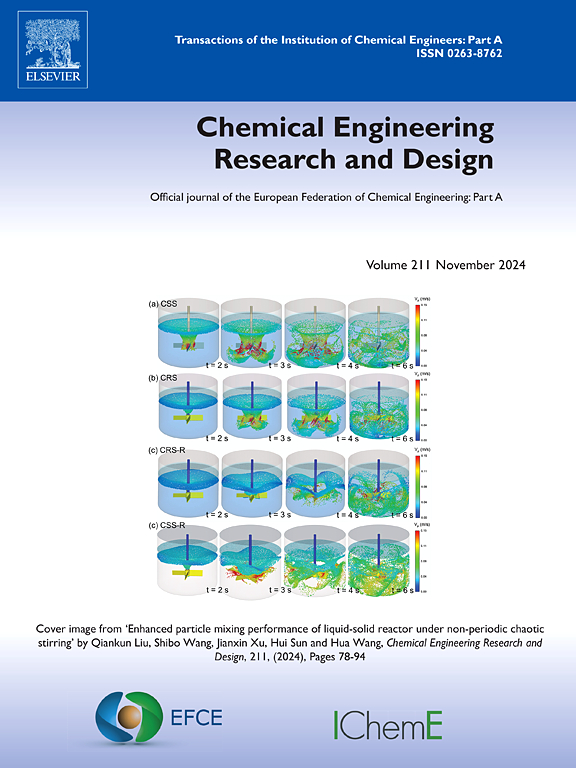Physics-based model as a versatile tool towards advanced process control of the naphtha distillation unit
IF 3.7
3区 工程技术
Q2 ENGINEERING, CHEMICAL
引用次数: 0
Abstract
Following the recent successes with low input data variability and soft sensor design under feed composition changes, this study proposes, among other things, the use of a physics-based approach to improve multivariable model predictive control (MPC) of naphtha distillation. Unlike the industrial settings, where the influence of other manipulated variables is difficult to exclude due to the actions of the human operator, a physically based modeling provides close to an ideal step-by-step and one-by-one testing of the chemical process, resulting in improved accuracy of the transfer function matrix used for MPC design. The proposed approach has been tested on canonical and alternative control schemes used in stabilized naphtha production. Importantly, the physics-based model resolved all the issues associated with unavailability to reach the set points in controlling the quality of end products when compared with MPC built on the industrial data only irrespective of the control scheme considered. As a result, the steady-state controllability analysis and the closed-loop process behavior highlight that an alternative control structure with transfer function matrix obtained on a physics-based model is a better choice for the industrial case study. Thus, the developed strategy for MPC design was approved as relevant for the cases when a preliminary control scheme requires an update or optimized control scheme without affecting production is of great demand.
基于物理的模型是实现石脑油蒸馏装置高级过程控制的通用工具
继最近在进料成分变化下的低输入数据可变性和软传感器设计方面取得成功之后,本研究提出,除其他外,使用基于物理的方法来改进石脑油蒸馏的多变量模型预测控制(MPC)。与工业环境不同,在工业环境中,由于人类操作员的行为,其他被操纵变量的影响很难排除,基于物理的建模提供了接近理想的一步一步的化学过程测试,从而提高了用于MPC设计的传递函数矩阵的准确性。该方法已在稳定石脑油生产的规范控制方案和替代控制方案上进行了试验。重要的是,与基于工业数据的MPC相比,无论考虑哪种控制方案,基于物理的模型解决了与无法达到控制最终产品质量的设定点相关的所有问题。因此,稳态可控性分析和闭环过程行为表明,基于物理模型的传递函数矩阵替代控制结构是工业案例研究的更好选择。因此,当初步控制方案需要更新或优化控制方案而又不影响生产的情况下,所开发的MPC设计策略得到了批准。
本文章由计算机程序翻译,如有差异,请以英文原文为准。
求助全文
约1分钟内获得全文
求助全文
来源期刊

Chemical Engineering Research & Design
工程技术-工程:化工
CiteScore
6.10
自引率
7.70%
发文量
623
审稿时长
42 days
期刊介绍:
ChERD aims to be the principal international journal for publication of high quality, original papers in chemical engineering.
Papers showing how research results can be used in chemical engineering design, and accounts of experimental or theoretical research work bringing new perspectives to established principles, highlighting unsolved problems or indicating directions for future research, are particularly welcome. Contributions that deal with new developments in plant or processes and that can be given quantitative expression are encouraged. The journal is especially interested in papers that extend the boundaries of traditional chemical engineering.
 求助内容:
求助内容: 应助结果提醒方式:
应助结果提醒方式:


